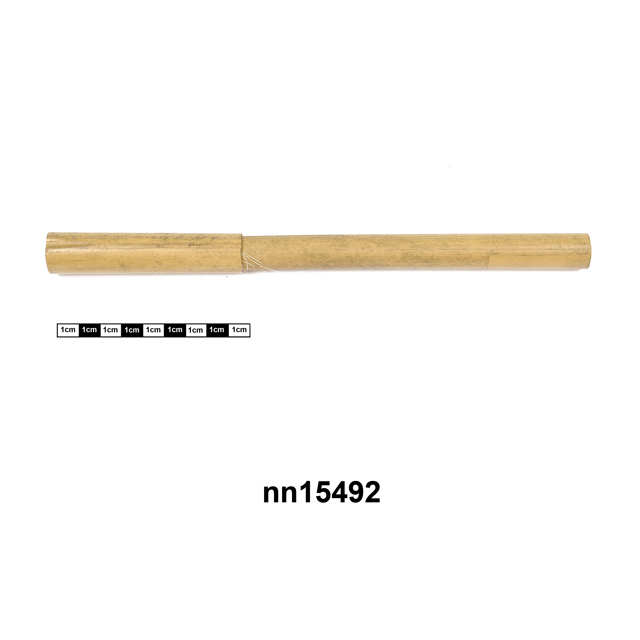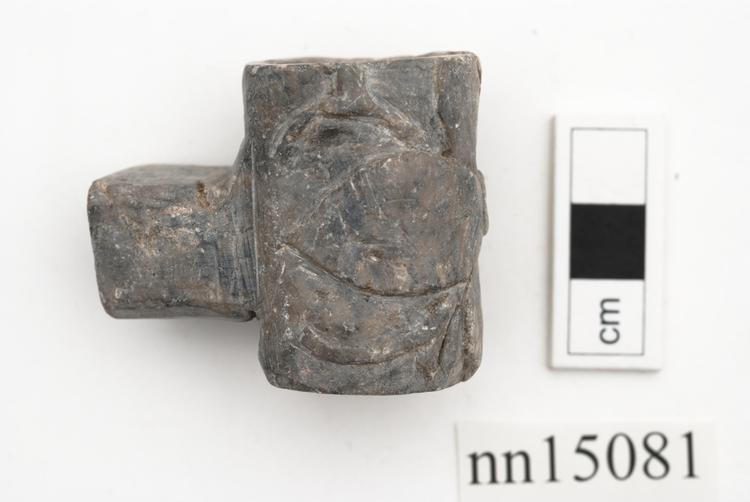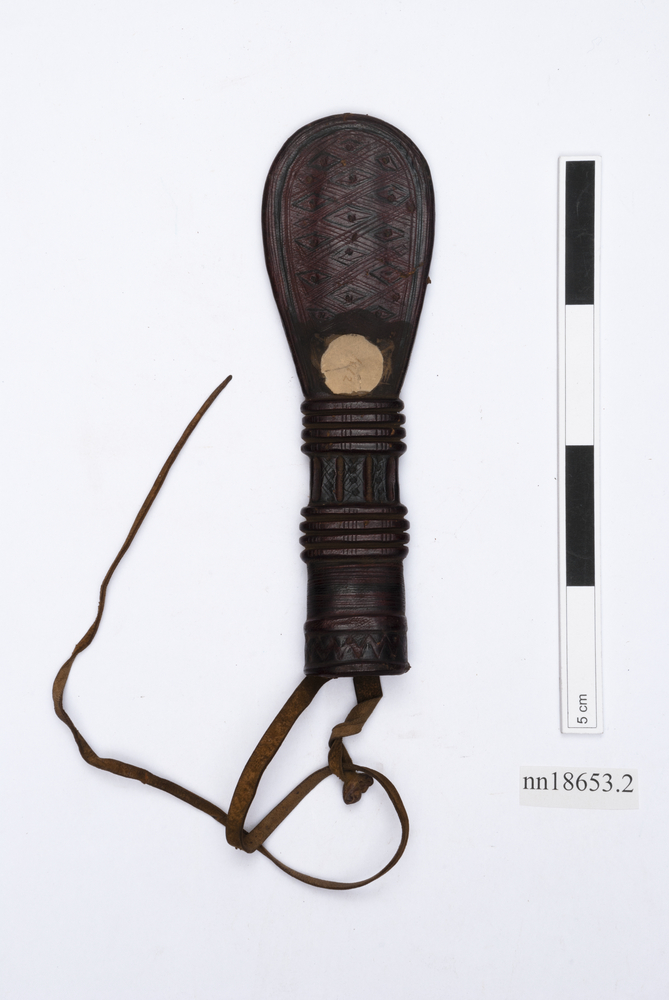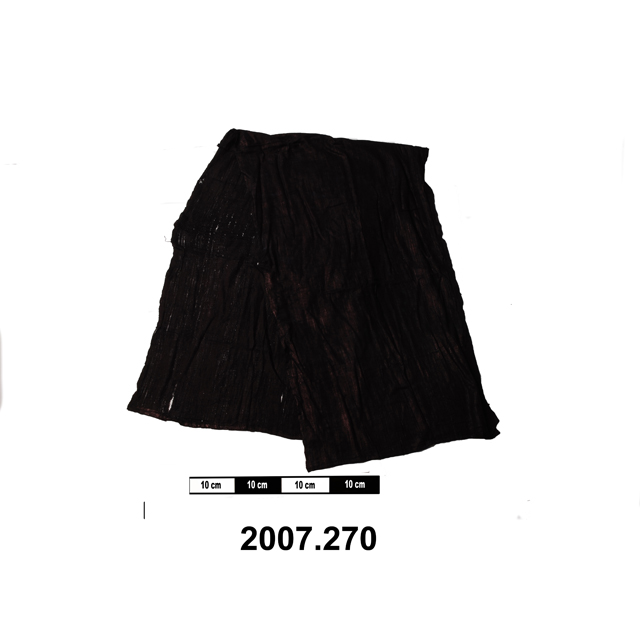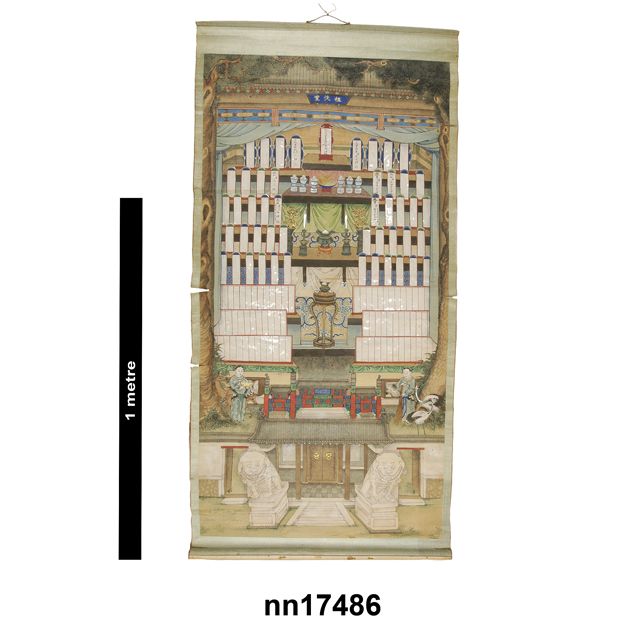
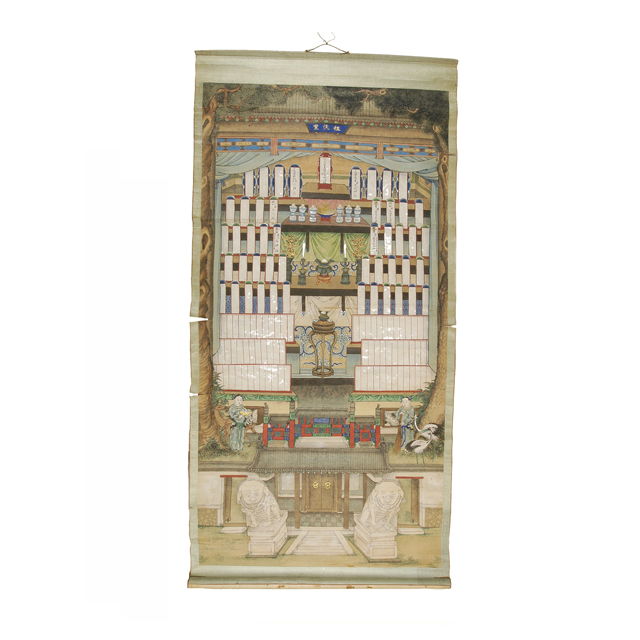
Ancestral chart in paper form, with inscriptions of deceased relatives, one side for men, the other for women. The top band reads 祖先堂 ‘zu xian tang’, which refers to the ‘ancestral hall’. below this the red tablet in the middle reads 王氏堂上歷代宗親考妣之神位, meaning ‘shrine of all the ancestors of the Wang Family’. The tablets of female ancestors are placed on the left, while the male ancestors sit on the right. The top left tablet reads 王氏曾祖妣郭氏之神位, which is translated as ‘the shrine of Mr. Wang’s wife, my great grandmother Mrs. Kuo’. Here, ‘my’ refers to the person who offered this painting and did the worship at that time. The top right tablet reads 王氏曾祖考諱 昆之神位, which means ‘the shrine of Mr. Wang, my great grandfather, whose posthumous name is Kun’. The left tablet in the row below reads 祖妣楊氏之神位, meaning ‘the shrine of my grandmother Mrs. Yang’. The right tablet in this row reads 祖考諱 永泰王公之神位 ‘the shrine of my grandfather, lord Yong-Tai (posthumous name)’. The tablet beside this on its right reads 祖叔諱 永海王公之神位 ‘the shrine of my grand-uncle, lord Yong-Hai (posthumous name)’. In the next row down the inscribed tablet on the left reads 先妣崔氏之神位/ 甲子年十二月初九日故, which is translated as ‘the shrine of my deceased mother Mrs. Cui, who died on 9th December of the year Jia-Zi’. Jia-Zi could be either the year 1804 or 1864. In the same row the inscribed tablet on the right reads 先考諱 耀王公之神位/壬子年十月二十八日故, meaning ‘the shrine of my deceased father lord Yao (posthumous name), who died on 28th October, year Ren-Zi’. Ren-Zi might be the year 1852. As illustrated by the painting, only males can have a posthumous name.
On the altar of the second layer, a plate holding the Buddha’s hand (or the fingered citron) and six ceramic cups containing Tang yuan (glutinous rice balls) are offered to the ancestors. Tang yuan has a homophone for union, so here they are served to symbolise family togetherness. On the table of the lower layer, a Ding (bronze), two white candles, and two Zun (bronze) holding Lingzhi mushroom (or reishi) are also offerings to ancestors. Originally used as food vessels, Ding and Zun then became ritual objects for ceremonial use. The shape of Lingzhi mushrooms is similar to that of the ru-yi sceptre, so it also symbolises wealth and good fortune.
The two fairies below might be Daoist figures. The left fairy holds a gold plate with four cups (probably water), with two sika deer behind her. In Chinese, the word deer has the homophone for good fortune. Usually, three cups of water should be offered along with the worship. It is believed that ‘water’ can balance the ‘fire’ of incense and burner. Also, each cup refers to the water from heaven, earth and human being respectively.
Another fairy is sweeping the floor, with two red-crowned cranes beside. Cranes symbolise good fortune and longevity, and the act of sweeping implies that the descendants are taking good care of the deceased. Festivals like the Tomb-Sweeping day are important occasions as a reminder for people to commemorate the dead.
Below this, there are two stone lions sit in front of the door, protecting the hall. Stone Lions are known as guardian lions in Chinese culture. They often stand in front of Chinese Imperial palaces, Imperial tombs, government offices, temples, and the homes of government officials and the wealthy. Usually depicted in pairs, they are believed to have powerful mythic protective benefits.
may have been hung above or next to the ancestral shrine




